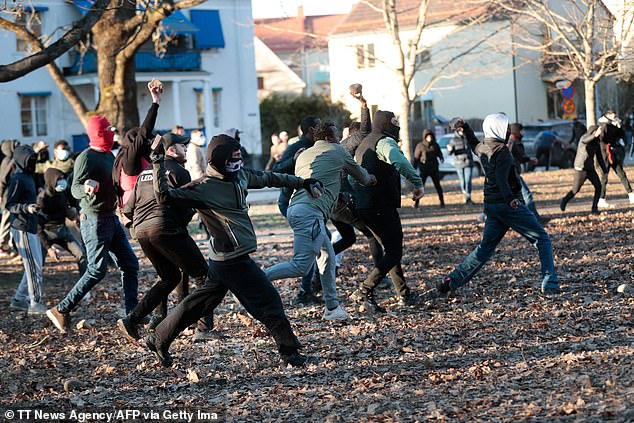Sweden has recorded its lowest number of asylum applications since 1997 following a massive crackdown as the Immigration Minister blames migrants for not integrating.
For decades, Sweden was hailed as a beacon of compassion, offering an unparalleled welcome to refugees with the most generous support schemes in Europe.
The Nordic state went beyond simply opening its borders, but celebrated cultural diversity by funding immigrants’ efforts to maintain their native languages and traditions.
But in the last decade, deadly violence linked to disputes between criminal gangs has intensified against the backdrop of high levels of migration into the country.
During the 2015 migration crisis, Sweden surprised the world by hosting almost 163,000 asylum seekers, the highest per capita figure of any EU country.
Nine years later, the picture could not be more different.
In the first 11 months of 2024, only 8,935 irregular migrants arrived in Sweden, of which 4,814 voluntarily returned home, making it the smallest number since 1997.
This dramatic shift is attributed to a sweeping package of reforms following the historic 2022 elections, which ushered in the toughest immigration policies Sweden has seen in decades.
Sweden has been described as a “haven” for mafia gangs due to increased migration. The anti-immigration backlash has in turn led, in the past, to clashes between groups and the police (pictured), who are overwhelmed trying to stamp out rising levels of gang violence.
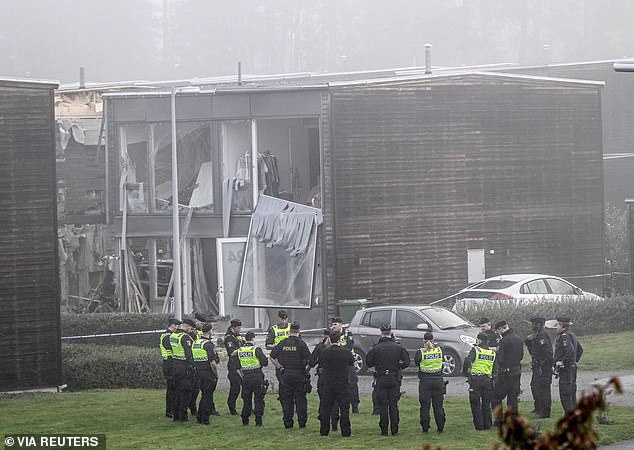
Police are seen at the scene of an explosion in Uppsala on September 28, 2023. The explosion killed 24-year-old Soha Saad.
Incredibly, early data now suggests that Sweden could see net emigration for the first time since the 1960s.
Swedish Migration Minister Johan Fossell, 45, is the architect of this seismic change, but he has been direct about the government’s new direction.
talking to The timesHe said: “We are implementing what we describe as a paradigm shift in Swedish migration policy, and we are doing it with a very open agenda that we want to limit the number of people seeking asylum here in Sweden.”
He explained that this measure does not mean that the country does not like immigrants, nor understands the situation they face, but because it is “impossible” to manage the task of integration when there is such a large influx each year.
This is a marked difference from the 1970s and 1980s, when Sweden boasted of being a “humanitarian superpower.”
Even after the 2015 migration wave, Sweden clung to its open-hearted ideals, but as gun violence and gang-related bombings soared, critics warned the country was being pushed to the brink.
In 2023, Sweden had by far the highest per capita rate in the EU and, by December 2024, 40 people had been shot dead in the country, a chilling figure for a European country of only 10 million inhabitants.
These figures represented a 35 percent decrease compared to 2022, the deadliest year of the gang wars, when 63 people were shot dead.
Police said gangs have begun using social media platforms as “digital marketplaces” to openly recruit children, some as young as 11, to commit murders and bombings across the Nordic region.
Inexperienced teenagers, considered expendable by gangs, are easier for police to catch than those who ordered the shootings.
Still, 72 percent of fatal shootings were solved in 2023, compared to just 29 percent in 2022, helped in part by the rise of surveillance cameras.
Police said they aimed to deploy 2,500 cameras and drones this year, five times more than five years ago.
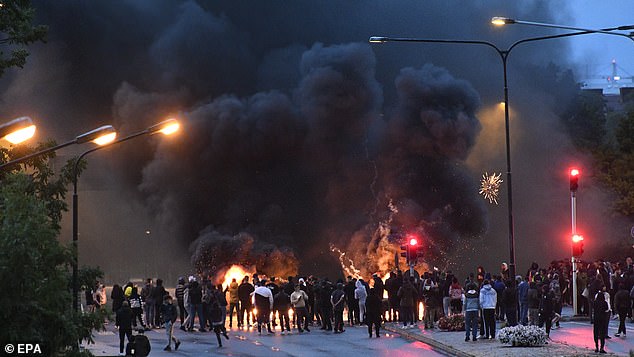
Smoke rises from burning tires, pallets and fireworks during police rioting with a few hundred protesters in the Rosengard neighborhood of Malmo, Sweden, August 28, 2020.
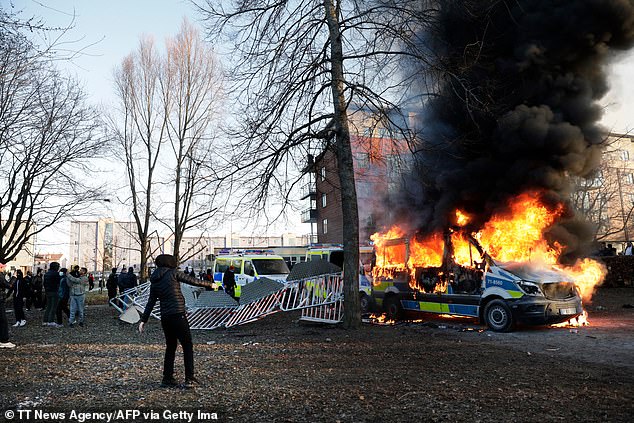
Police vans burn amid clashes between protesters and police in 2022
The radical right Sweden Democrats capitalized on this discontent, gaining ground by highlighting issues around immigration.
Scandinavian neighbors began issuing warnings about “Swedish conditions,” alarmed by the spread of gang violence to their own borders.
Forssell was frank about the lessons learned and said open-hearted politics paved the way for a harsh reality.
‘We can find accommodation for people who come here. The difficult part is the integration part: finding schools, finding apartments, giving people the possibility of finding work,” he said.
The turning point was the 2022 elections.
With the Sweden Democrats on the rise, even the traditionally centre-left Prime Minister Magdalena Andersson admitted that Sweden did not need more “Somalitowns” or “Little Italys”.
The center-right moderates only managed to form a government by reaching an agreement with the Swedish Democrats, giving them significant influence over crime and immigration policies.
Since then, the reforms have been intense and rapid.
Family reunifications have been tightened, residence permits are more easily revoked and asylum rights have been reduced to the minimum allowed by EU law.
Immigrants who do not qualify for residency are urged to return home, and some are placed under electronic monitoring or confined in special facilities.
Sweden’s immigration policy has undergone a seismic shift, abandoning its once liberal approach in favor of stricter rules and a focus on control.
The government is now moving away from traditional asylum status and pushing more immigrants into the weaker “subsidiary protection” category.
This status, unlike full asylum, requires renewal every 13 months and is only extended beyond three years for those who can demonstrate that they are financially independent.
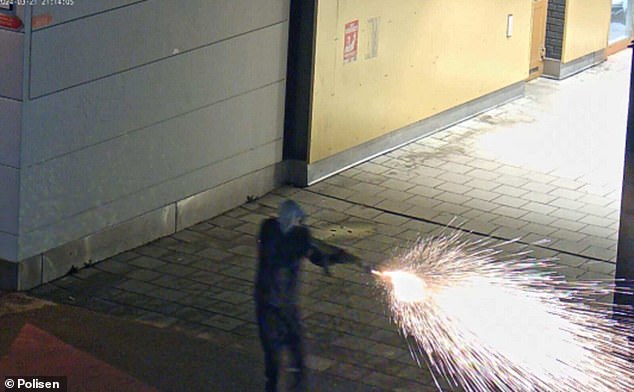
Three teenagers were sentenced after a man was killed while dining at a restaurant south of Stockholm in March, and the 17-year-old believed to have fired the fatal shot received a jail sentence.
Forssell has made no apologies for the hardline approach and, speaking candidly, revealed that the goal is to return to a pre-1970s immigration model, prioritizing qualified “guest workers” and limiting asylum to only those with undisputed requests.
“We’re going back to basics,” Forssell explained, adding that restricting family reunification has already worked.
The minister also wants to introduce mandatory language and integration tests for anyone wishing to obtain Swedish citizenship.
While most European nations adopted such measures years ago, Sweden’s reluctance to follow suit was once a sign of pride, but now even Forssell dismisses the previous policy as absurd.
He criticized the possibility of becoming a Swedish citizen if an individual cannot speak the language or knows little or nothing about the country, calling it “stupid.”
Sweden’s change is also reflected in the demographics of its refugees.
Syrians, who made up a third of the 2015 wave, now dominate Sweden’s refugee population, which numbers 111,000.
Many of them are expected to return home as the Assad regime stabilizes, but Forssell estimates that some 100,000 undocumented migrants remain in Sweden, forming what he calls a “shadow society.”
This shadow society represents one of the most difficult challenges facing Sweden.
These undocumented individuals, many of them without the right to stay, exist on the margins, outside the reach of state systems but still within their borders.
Forssell is determined to crack down, especially against those who have committed crimes but managed to avoid deportation due to legal loopholes.
Currently, even convicted criminals who cannot be deported can remain in Sweden, receive benefits and keep jobs.
The minister called this “completely unacceptable” and promised to put an end to it, defiantly stating that if a person is not granted asylum, they must return to their country.
In the past, Sweden’s leniency allowed undocumented migrants to reapply for asylum after four years of living in the shadows, a policy that Forssell said had tragic consequences.
It’s a sea change for a nation once celebrated as a refuge for refugees.
A decade ago, when Forssell served as immigration spokesperson, foreign observers marveled at Sweden’s utopian image.
The minister said Sweden was once recognized as a country where everything worked perfectly before chaos broke out.
But now, nations are asking Sweden how it turned the situation around so quickly, becoming a role model in handling a migration crisis seemingly out of control.
And while Sweden may no longer be the superpower of its humanitarian heyday, under Forssell’s leadership it has forged a new identity, one that prioritizes control, integration and a sensible approach to immigration.


